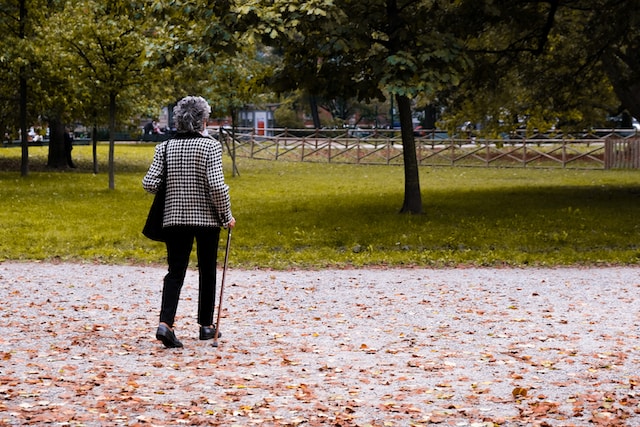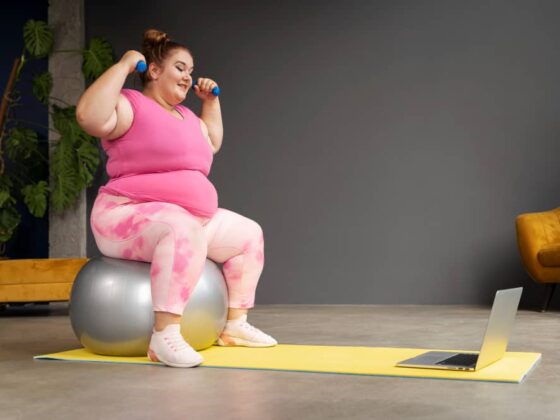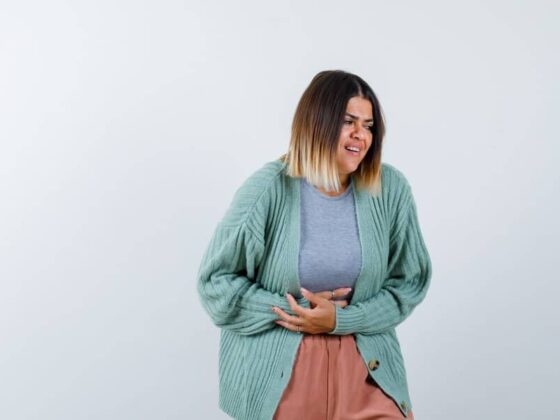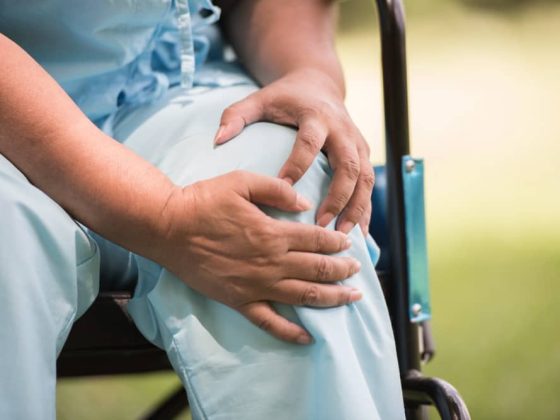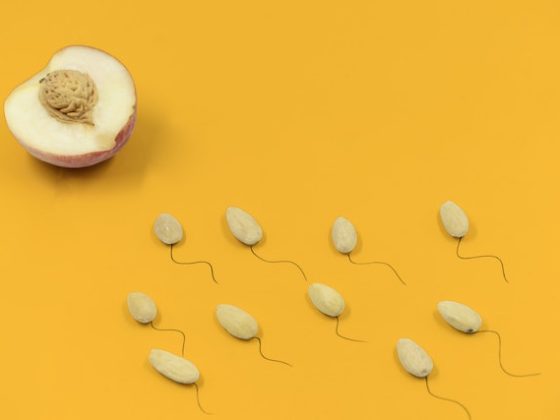Hey there! This post may contain affiliate links. As an Amazon Associate, I earn a teensy commission from qualifying purchases when you buy through these links (at no additional cost to you). For more info, please check the full disclaimer.
Menopause is a natural biological process that marks the end of your menstrual cycle. You may have entered this phase if you’ve gone 12 months without a menstrual period. It usually happens in your 40s or 50s and may lead to several health conditions. Menopause causes osteoporosis, heart disease, hot flashes, and the inability to get pregnant.
Osteoporosis – a condition that causes the bones to become weak and brittle – is one of the most common problems among menopausal women. According to an estimate, nearly 50% of all postmenopausal women experience osteoporosis.
Why Menopause Causes Bone Loss
Osteoporosis after menopause can increase the risk of fractures and lead to disability and pain. It affects more women than men, especially after menopause.
The following are two reasons why bone health is affected after menopause.
Hormonal Changes
During menopause, certain hormonal changes contribute to the increased risk of osteoporosis.
Estrogen plays a crucial role in maintaining bone density and helps regulate bone remodeling – a process of breaking down old bone tissue and replacing it with new one.
However, during menopause, estrogen decreases significantly. This causes bone breakdown at a faster rate than new bone formation, leading to a loss of bone density.
Age and Lifestyle
Additionally, menopause causes osteoporosis because of age and lifestyle changes.
Aging itself leads to a gradual decline in bone density, and many factors like lack of physical activity, smoking, excessive alcohol consumption, and inadequate calcium and vitamin D intake can further exacerbate the risk of osteoporosis.
The rate of bone loss is highest in the first few years after menopause and continues throughout the rest of a woman’s life.
Read More: Best Foods with High Estrogen
What are the Symptoms of Postmenopausal Osteoporosis?
Most women who develop osteoporosis after menopause may not be aware of it. The symptoms are often masked as normal aging. However, it is important for women to look out for these warning signs.
- Back pain
- Bone pain
- Difficulty in moving
- Joint stiffness, especially in the morning
- Changes in posture, such as developing a hunched back or kyphosis
- Increased fractures, especially wrist, hips, or back
Read More: Best Books on Menopause
How is Osteoporosis Diagnosed?
When menopause causes osteoporosis, it is usually diagnosed through clinical examination. Your doctor may suspect osteoporosis from your medical history. They may also advise blood tests, such as calcium and vitamin D, to check for adequate levels.
X-rays and CT scans of the affected region may highlight areas where bone and cartilage may be beginning to break. A special type of X-ray called a DEXA scan is done to check the levels of calcium and bone density in the body. A low score on the DEXA scan may indicate osteoporosis.
Knees, ankles, and hips often bear the maximum weight of our body and are prone to bone loss. So, your doctor may focus on these areas.
Osteoporosis is a slow degenerative process that may take years. It is possible that your doctor schedules regular visits to monitor the progress of the disease.
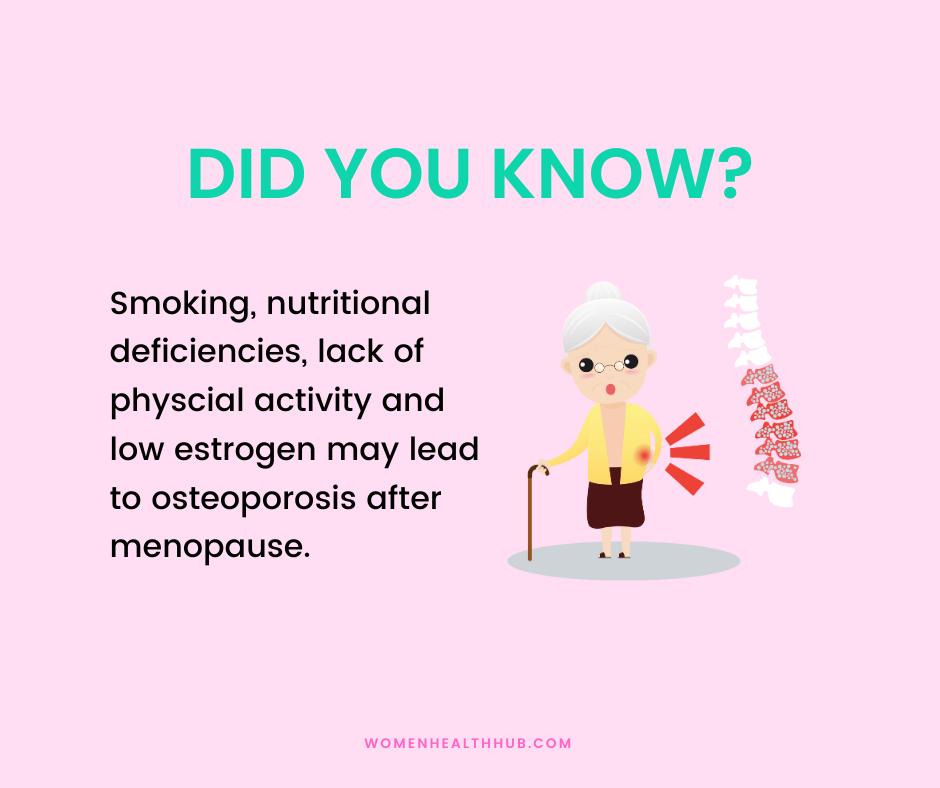
How to Prevent Bone Loss After Menopause
Menopause causes bone loss which can lead to many problems for older women. Once osteoporosis begins, it may not be completely cured. However, there are several ways to manage the deterioration process.
The following tips provide a good strategy for preventing osteoporosis.
- Calcium and Vitamin D Intake
Add calcium-rich foods like dairy products, leafy greens, and fortified foods in your diet. Also, ensure sufficient exposure to sunlight or consider vitamin D supplements.
- Weight-Bearing Exercises
Engaging in weight-bearing exercises, such as walking, jogging, dancing, or strength training, can help build and maintain bone density. Aim for at least 30 minutes of exercise most days of the week. Be sure to work with a trainer or a trained professional to ensure that you are doing the right exercises and not harming your joints.
Read More: Best Exercises for Weight Loss
- Fall Prevention
Minimizing the risk of falls can significantly reduce the chances of fractures. Ensure your living environment is safe by removing hazards, using handrails on stairs, and installing grab bars in bathrooms if necessary. Regular vision check-ups and appropriate footwear can also contribute to fall prevention.
- Healthy Lifestyle Choices
Avoid smoking and limit alcohol consumption, as both can negatively impact bone health.
- Early Detection of Osteoporosis
Regular visits to the doctor can ensure that osteoporosis is detected early on, especially after menopause. Your doctor may suggest supplements or medicine to slow down the bone-breaking process. They may also recommend a tailored exercise regimen depending on your individual circumstances.
The Bottomline
Menopause causes osteoporosis in many women. At menopause, levels of female hormones estrogen and progesterone begin to fall. Estrogen is an important hormone because it maintains the balance of bone-building and bone-breaking in the body. When this balance is disrupted, you might experience osteoporosis. By understanding the causes and risk factors of osteoporosis, women can take action to protect their bones and prevent fractures. Working closely with healthcare professionals and implementing a comprehensive approach to bone health can help women maintain strong and healthy bones well into their post-menopausal years.
References:
- https://www.ncbi.nlm.nih.gov/pmc/articles/PMC5643776/
- https://journals.lww.com/menopausejournal/Fulltext/2021/09000/Management_of_osteoporosis_in_postmenopausal.3.aspx
